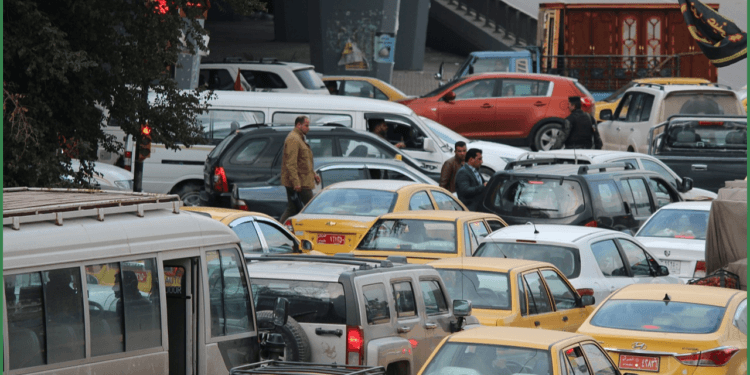Karachi descended into turmoil on Sunday as a protest near the Karachi Press Club (KPC) unleashed a colossal traffic snarl, trapping commuters in hours-long delays across the city’s busiest corridors. The ripple effect of the demonstration left major arteries like I.I. Chundrigar Road, Saddar, Empress Market, and Club Road choked with endless lines of vehicles, from cars to rickshaws, as frustration mounted among stranded residents.
The crisis forced many to endure unbearable waits, with some breaking their fasts roadside amid scarce supplies of food and water. The situation was exacerbated when authorities sealed off key routes surrounding the KPC, including stretches from Din Muhammad Wafai Road to MR Kiani Chowrangi and Fawara Chowk. While intended to manage the unrest, the closures instead amplified the gridlock, leaving commuters fuming and desperate for relief.
On social media, citizens unleashed their anger, slamming the administration for poor planning and lack of communication about alternative routes. Many demanded smarter traffic management and preemptive measures to avoid such chaos in the future. “Stuck for hours without a clue—why can’t they at least tell us which roads to take?” one user posted on X, echoing the sentiments of thousands caught in the ordeal.
Adding to the tension, the Sindh government imposed Section 144 across Karachi on Monday, outlawing gatherings of more than five people to curb further protests. The measure, aimed at ensuring public safety, came with stern warnings of legal action against violators. However, the enforcement strategy—sealing off roads around the KPC with parked vehicles—only deepened the city’s traffic woes, piling onto the misery of daily commuters already reeling from the previous day’s chaos.
Local authorities defended their actions, stating that the restrictions and road closures were necessary to prevent escalation amid fears of more unrest. But for the average Karachiite, the response felt like a heavy-handed blow that punished the many for the actions of a few. Businesses in the affected areas reported sharp declines in foot traffic, with shopkeepers along I.I. Chundrigar Road lamenting losses as customers couldn’t reach them.
The episode has reignited debates over how Karachi, a sprawling metropolis of over 20 million, manages its fragile infrastructure during crises. Urban planners and activists argue that the city’s reliance on a few key roads makes it vulnerable to such disruptions, urging investment in better public transport and traffic systems. Meanwhile, commuters are left grappling with the immediate fallout, their daily routines upended by a protest that exposed the city’s deeper systemic cracks.
As Karachi limps back to normalcy, the calls for accountability grow louder. Residents are demanding not just apologies but actionable steps—better coordination, real-time traffic updates, and contingency plans—to ensure they aren’t left stranded again. For now, the scars of this chaotic weekend linger, a stark reminder of the delicate balance between order and anarchy in Pakistan’s largest city.

















































